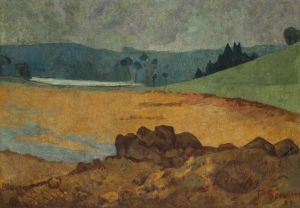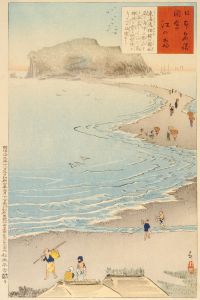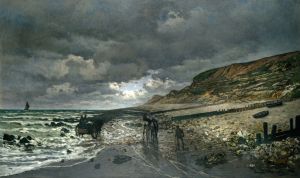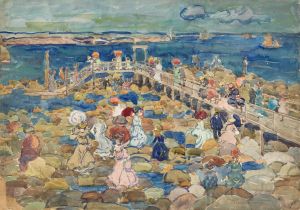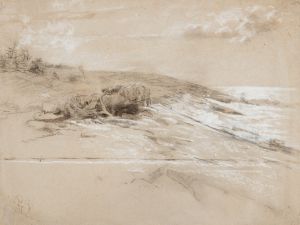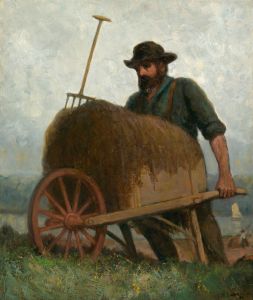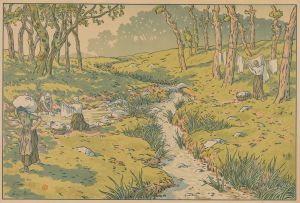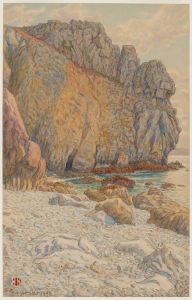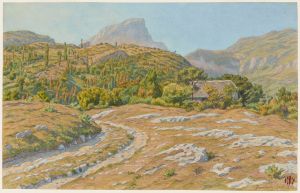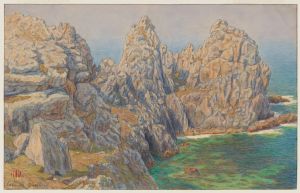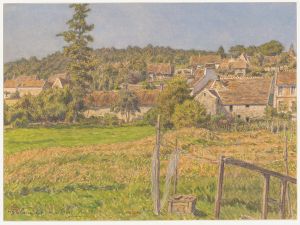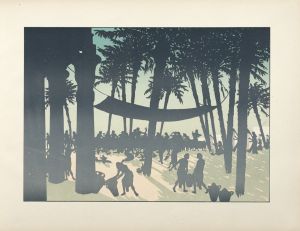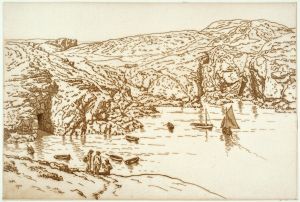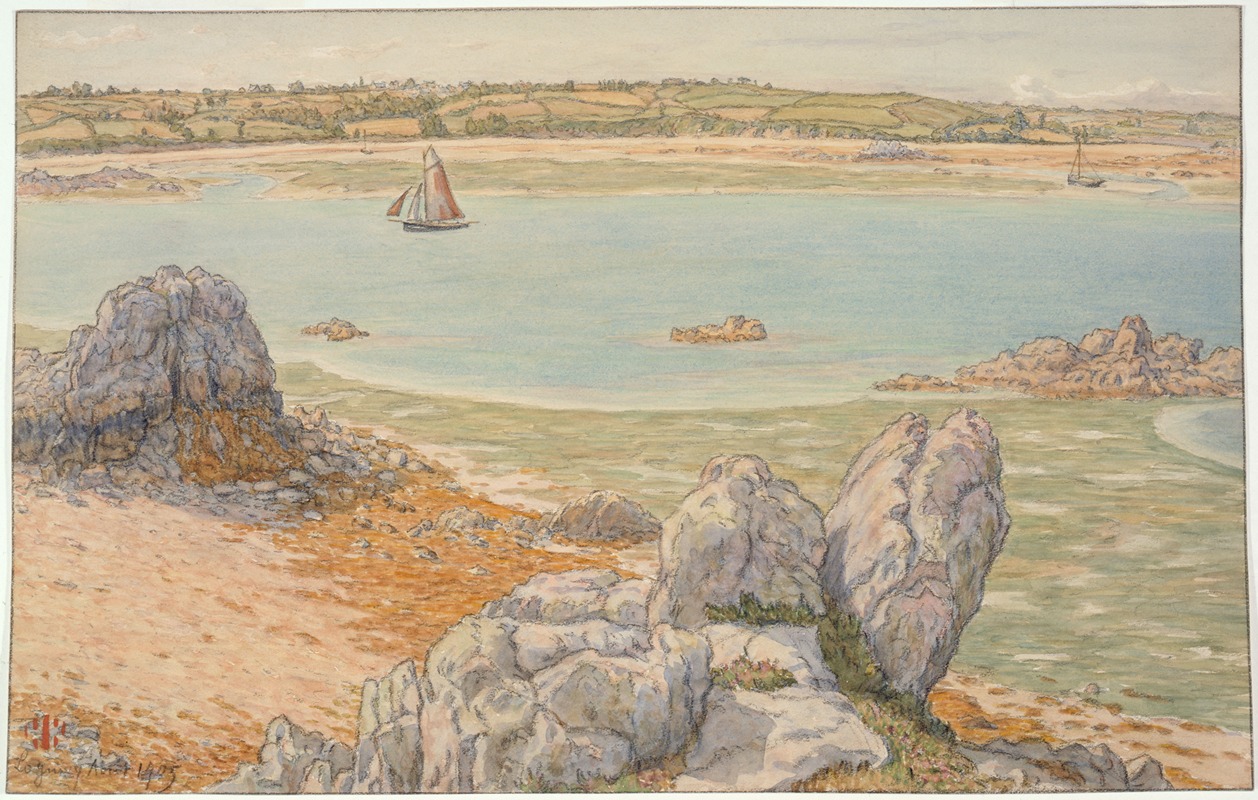
Embouchure du Trieux. Marée basse. Loguivy
A hand-painted replica of Henri Rivière’s masterpiece Embouchure du Trieux. Marée basse. Loguivy, meticulously crafted by professional artists to capture the true essence of the original. Each piece is created with museum-quality canvas and rare mineral pigments, carefully painted by experienced artists with delicate brushstrokes and rich, layered colors to perfectly recreate the texture of the original artwork. Unlike machine-printed reproductions, this hand-painted version brings the painting to life, infused with the artist’s emotions and skill in every stroke. Whether for personal collection or home decoration, it instantly elevates the artistic atmosphere of any space.
Henri Rivière (1864–1951) was a French artist known for his innovative contributions to printmaking and his role in popularizing Japonisme in France. He is particularly celebrated for his mastery of color woodcuts, a technique inspired by Japanese ukiyo-e prints. Rivière's works often depict landscapes, seascapes, and scenes of everyday life, capturing the beauty of the natural world with a refined sense of composition and color.
One of his notable works, Embouchure du Trieux. Marée basse. Loguivy (translated as "Mouth of the Trieux. Low Tide. Loguivy"), is a color lithograph that reflects Rivière's fascination with the coastal landscapes of Brittany, a region in northwestern France. This piece is part of his series Paysages Bretons ("Breton Landscapes"), which showcases the rugged beauty and unique character of the Breton countryside and coastline. The series was created in the late 19th and early 20th centuries, during a period when Rivière was deeply influenced by Japanese art and the natural scenery of Brittany.
The artwork depicts the mouth of the Trieux River, a waterway in the Côtes-d'Armor department of Brittany, near the small fishing village of Loguivy. The scene is set at low tide, revealing the exposed seabed and the tranquil atmosphere of the coastal environment. Rivière's use of soft, muted colors and delicate lines captures the serene beauty of the moment, emphasizing the harmony between land, sea, and sky. The composition reflects his ability to distill complex landscapes into simple, evocative forms, a hallmark of his artistic style.
Rivière's work is characterized by its synthesis of traditional Western techniques and Japanese aesthetics. In Embouchure du Trieux. Marée basse. Loguivy, this influence is evident in the flattened perspective, the emphasis on natural elements, and the subtle gradations of color. These stylistic choices demonstrate Rivière's admiration for Japanese woodblock prints, particularly those of artists like Hokusai and Hiroshige, whose works he studied extensively.
The Paysages Bretons series, including this piece, was created using lithography, a printmaking technique that allowed Rivière to experiment with color and texture. Lithography enabled him to produce multiple copies of his works, making them accessible to a wider audience. This democratization of art was in line with Rivière's belief in the importance of bringing beauty into everyday life.
Today, Embouchure du Trieux. Marée basse. Loguivy is recognized as an example of Rivière's ability to capture the essence of a place with simplicity and elegance. It reflects not only his technical skill but also his deep appreciation for the natural world and his innovative approach to art. The piece continues to be celebrated as part of Rivière's legacy, which has had a lasting impact on the fields of printmaking and landscape art.





